In modern business, where meeting customer expectations is a pivotal goal, harnessing cutting-edge technology to elevate customer service has become nothing short of imperative. One striking manifestation of this strategic utilization of technology, specifically geared towards optimizing customer interactions, is the seamless integration of chatbots. As businesses navigate the landscape of “using chatbots for customer service” these sophisticated automated conversational agents emerge as a transformative force, reshaping the traditional contours of customer support and ushering in a new era marked by efficiency, personalization, and uninterrupted assistance.
Benefits of Using Chatbots for Customer Service
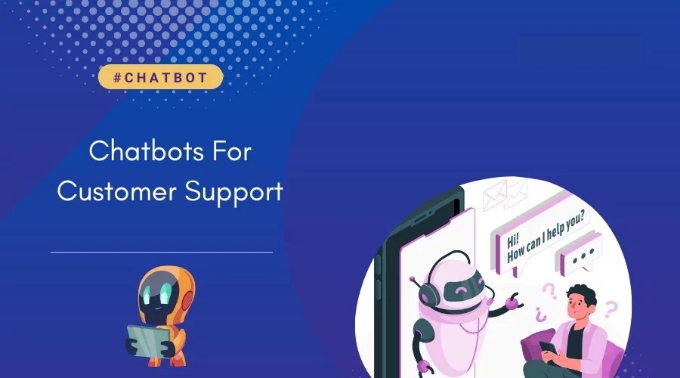
Leveraging technology has emerged as a paramount strategy to optimize interactions and elevate satisfaction. Among the myriad technological advancements, the integration of chatbots has garnered significant attention, revolutionizing the way businesses engage with their clientele. Let’s delve deeper into the multifaceted advantages that “using chatbots for customer service” brings to the forefront.
Enhanced Efficiency
Chatbots revolutionize customer interactions by providing instantaneous responses, expediting issue resolution, and enhancing overall efficiency. With their lightning-fast response times, businesses can meet customer needs promptly, boosting satisfaction.
In a world where time is of the essence, chatbots stand as efficient gatekeepers of customer inquiries. The immediacy with which they respond not only reduces waiting times for customers but also empowers businesses to address concerns swiftly. By effortlessly handling routine tasks, such as retrieving order information or guiding users through troubleshooting steps, chatbots free up human agents to tackle more complex issues, thereby optimizing the allocation of resources. This enhanced efficiency extends beyond rapid responses; it encompasses the broader spectrum of streamlined processes and resource optimization.
24/7 Availability
The beauty of chatbots lies in their unwavering availability. Unlike traditional support teams, which are constrained by working hours, chatbots provide around-the-clock assistance, catering to global audiences and different time zones. The significance of 24/7 availability cannot be overstated. In a globalized marketplace, where customers hail from diverse corners of the world, time zone constraints can hinder seamless customer service.
However, by embracing chatbots, businesses transcend temporal boundaries, ensuring that customers receive assistance irrespective of the hour. This round-the-clock accessibility aligns with modern customer expectations and underscores a business’s commitment to providing unwavering support. The 24/7 availability of chatbots signifies not just operational convenience but also a dedication to customer-centricity.
Scalability
As businesses grow, the volume of customer inquiries can become overwhelming. Chatbots seamlessly handle scalability, ensuring consistent service quality even during peak demand periods. The scalability of chatbots is akin to having a workforce that effortlessly expands to accommodate increasing demands. With the growth of a business comes the inevitability of heightened customer interactions. Chatbots rise to this challenge by offering a consistent level of support, regardless of the volume of inquiries.
The agility to handle surges in customer inquiries is a testament to the robust architecture of chatbots, allowing businesses to maintain service quality without compromising efficiency or response times. This scalability not only reflects technological prowess but also underscores the adaptability of chatbots as valuable assets in the customer service arsenal.
Personalized Customer Experience
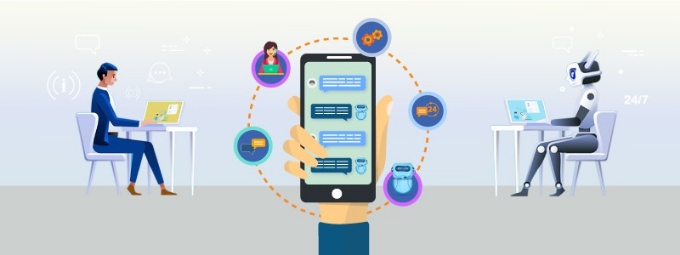
With a goal of exceeding customer expectations, businesses have embarked on a remarkable path of customization, fueled by advancements in technology. As a result, they have successfully integrated chatbots that utilize vast amounts of data and machine learning. The outcome is a tailored and exceptional customer experience. Let’s delve into the intricate realm of “using chatbots for customer service” and how they contribute to a new dimension of tailored engagement.
Utilizing Customer Data
By analyzing past interactions and customer data, chatbots can offer highly personalized experiences. These bots can predict preferences, make relevant recommendations, and create a sense of individualized attention. The advent of technology has ushered in an era of data-driven insights that businesses can leverage to provide exceptional customer experiences. Through the adept utilization of customer data, chatbots metamorphose into virtual concierges, understanding customers at a profound level.
By analyzing past interactions, purchase history, and browsing behavior, chatbots gain insights into individual preferences, enabling them to tailor responses and recommendations. This level of personalization extends beyond mere convenience; it creates a sense of recognition and attentiveness that fosters a deeper connection between customers and the brand. As chatbots harness the power of data analytics, customers are presented with offerings that align with their unique preferences, elevating the overall engagement to a profoundly personalized level.
Tailoring Responses
Chatbots have evolved beyond robotic interactions. With machine learning, they refine responses based on user interactions, providing a more natural, human-like conversation that fosters connection.
In the journey of “using chatbots for customer service“, the evolution from mechanistic interactions to empathetic conversations is a defining milestone. Powered by machine learning, chatbots have transcended scripted responses to engage customers in a more human-like manner. By learning from each interaction, chatbots adapt and tailor their responses to the unique context of the conversation. This adaptability to user behavior and language nuances enables chatbots to foster a sense of connection, making interactions feel more authentic and relatable.
The integration of natural language processing allows chatbots to comprehend not just the words but also the underlying sentiment, ensuring that responses resonate with the emotional undertones of the customer’s query. This evolution in communication style signifies the fusion of technology and humanity, establishing a bridge that enhances the quality of customer interactions. As chatbots refine their responses through machine learning, customers experience a dialogue that reflects a nuanced understanding of their needs, cultivating a genuine rapport between the customer and the brand.
Multilingual Customer Support
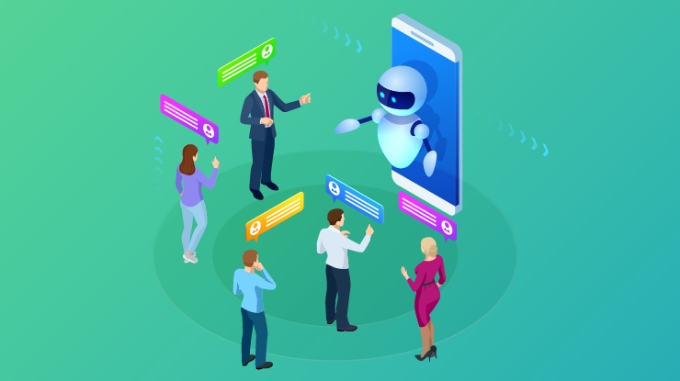
In today’s interconnected world, where businesses are reaching across borders and cultures, the role of customer support has evolved to embrace linguistic diversity. Multilingual customer support has emerged as a powerful solution to bridge language barriers and create inclusive customer experiences. In this article, we delve into the transformative impact of multilingual chatbots in breaking down language obstacles and expanding a business’s global outreach.
Breaking Language Barriers
Chatbots are adept at breaking language barriers and providing support in multiple languages. This inclusivity not only enhances customer experiences but also broadens a business’s global reach. Language, often celebrated as a unifying element, can also pose a formidable barrier in the realm of customer service. Enter chatbots, equipped with the prowess to transcend linguistic boundaries and extend support to customers in their preferred language.
The importance of this capability cannot be emphasized enough. By enabling interactions in various languages, chatbots foster an inclusive environment, guaranteeing that customers from different linguistic backgrounds receive equal levels of support and interaction. This linguistic inclusivity resonates deeply with customers, fostering a sense of respect for their unique identities. Moreover, the ability to provide support in multiple languages expands a business’s global footprint, making it accessible and relatable to audiences across borders.
Global Customer Reach
Catering to different languages opens doors to international markets. Chatbots enable businesses to communicate effectively with diverse audiences, tapping into new regions. The global marketplace is a tapestry woven with cultural diversity and linguistic variation. In such a landscape, the ability to communicate seamlessly with international audiences becomes a competitive advantage. Chatbots, as pioneers of “using chatbots for customer service“, act as invaluable intermediaries, bridging the gap between languages and cultures.
The provision of multilingual support signifies a commitment to understanding and serving a diverse clientele. By being proficient in numerous languages, chatbots enable businesses to effectively tap into new markets, establishing connections with audiences that might have been previously out of reach. This transcultural communication not only facilitates business expansion but also paves the way for meaningful interactions that transcend linguistic barriers, thus fostering a global community that values accessibility and understanding.
Efficiently Handling FAQs
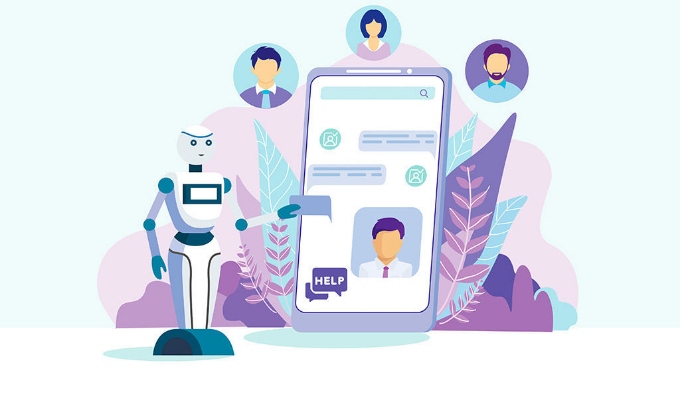
Navigating customer inquiries effectively is a cornerstone of exceptional customer service. In this era of digital engagement, businesses are harnessing the power of chatbots to revolutionize how frequently asked questions (FAQs) are addressed. From seamlessly providing instant responses to complex queries, to gracefully transferring conversations to human agents when empathy is paramount, the synergy between automation and the human touch is transforming the support landscape. Let’s delve into how businesses are utilizing chatbots to streamline their FAQ handling process and enhance customer experiences.
Automated FAQ Handling
One of the most impactful applications of chatbots is their remarkable ability to efficiently address frequently asked questions (FAQs). This feature is a game-changer for businesses, streamlining customer interactions and optimizing support processes. Chatbots, armed with their vast knowledge base and quick response times, excel at swiftly providing accurate and relevant answers to common queries. This not only saves valuable time for customers seeking information but also lightens the load on support teams by reducing the influx of repetitive inquiries. As a result, businesses can allocate their human resources more effectively, focusing on resolving more complex issues and delivering a more comprehensive customer experience.
The automation of FAQ handling contributes to an elevated customer experience by offering instant solutions to routine questions. Whether customers are inquiring about product specifications, order tracking, or return policies, chatbots stand ready to assist 24/7. This proactive approach to addressing queries fosters customer satisfaction, as users feel empowered to find information conveniently. Moreover, the consistency and accuracy of chatbot responses further enhance trust in the brand’s customer service.
Human Touch in FAQs
While chatbots exhibit exceptional efficiency in addressing routine queries, the human touch remains indispensable in certain situations. Some issues transcend the realm of straightforward answers, requiring empathy, understanding, and emotional intelligence – qualities that humans naturally excel in. In such cases, chatbots demonstrate their versatility by seamlessly transitioning complex or emotionally sensitive matters to human customer support agents.
By identifying instances where human intervention is essential, chatbots uphold the delicate balance between automation and empathy. When customers encounter complex problems, disputes, or emotionally charged concerns, chatbots have the ability to intuitively transfer the conversation to a human agent. This transition ensures that customers receive the personalized attention they deserve, fostering a deeper connection with the brand.
The collaboration between chatbots and human agents creates a synergistic support environment. While chatbots optimize efficiency, human agents provide the warmth and understanding necessary for intricate situations. This hybrid approach ensures that customers not only receive timely resolutions but also experience a level of care and empathy that can only be offered by skilled human professionals. Ultimately, the marriage of automation and the human touch enhances the overall customer support ecosystem, reinforcing the brand’s commitment to exceptional service.
Instant Issue Resolution

When it comes to customer support, the ability to swiftly address issues holds immense value. Chatbots emerge as problem-solving wizards in this domain, armed with the capability to offer step-by-step solutions to a plethora of common problems. This proficiency in providing immediate resolutions not only mitigates customer frustration but also ushers in a new era of efficient support services.
Effective Problem-Solving
Chatbots stand out as effective problem solvers due to their inherent capacity to swiftly analyze and address issues. By leveraging their vast repository of information and algorithms, chatbots can guide customers through troubleshooting processes, offering clear and concise steps to rectify common problems. Whether it’s resetting a password, troubleshooting a technical glitch, or navigating through account settings, chatbots excel in breaking down complex issues into manageable steps. This level of problem-solving proficiency ensures that customers can swiftly overcome obstacles, leading to improved user experiences and heightened customer satisfaction.
Furthermore, the speed at which chatbots offer solutions plays a pivotal role in customer interactions. Instead of enduring prolonged wait times or searching through extensive knowledge bases, customers can receive instant assistance through chatbots. This immediate problem-solving capability not only enhances the overall customer journey but also reinforces the brand’s commitment to resolving issues promptly and efficiently.
Enhancing Satisfaction
The correlation between rapid problem resolution and customer satisfaction is unmistakable. When customers encounter obstacles or difficulties, their expectations are rooted in receiving timely and effective assistance. Chatbots fulfill this expectation by instantly offering solutions to the challenges at hand. As a result, customers experience a sense of gratification that stems from having their concerns addressed without delay.
This enhanced level of satisfaction is a catalyst for positive brand perceptions. When customers receive immediate assistance that results in successful issue resolution, their perception of the business elevates. They are more likely to view the brand as responsive, attentive, and committed to their needs. This positive sentiment not only fosters loyalty but also transforms customers into brand advocates who willingly share their positive experiences with others.
Furthermore, the ripple effect of enhanced customer satisfaction is notable. Happy customers are more inclined to remain loyal to the brand, engage in repeat transactions, and even spread positive word-of-mouth recommendations. This, in turn, contributes to improved customer retention rates and organic business growth. By leveraging chatbots for instant issue resolution, businesses are effectively creating a cycle of positive customer experiences that reverberates throughout their entire customer base.
Tips for Successful Integration

Integrating chatbots into a business’s customer service ecosystem is a strategic endeavor that holds the potential to enhance customer experiences and streamline operations. To ensure a seamless and successful integration, several key considerations come into play. Here are some valuable tips for businesses to maximize the benefits of incorporating chatbots into their customer service strategy.
Defining Clear Objectives
A critical first step in chatbot integration is defining clear and well-defined objectives. Businesses should outline their specific goals for incorporating chatbots into their customer service operations. This involves identifying the tasks, functions, or interactions that chatbots will be responsible for. Whether it’s handling FAQs, providing instant resolutions, or facilitating appointment scheduling, having clear objectives ensures that the chatbot’s role aligns with the company’s broader customer service strategy.
By defining objectives, businesses can set the stage for a targeted and purposeful integration process. This clarity guides the selection of the right chatbot technology, determines the level of automation required, and establishes performance metrics for evaluating the success of the integration. When chatbots are integrated with a well-defined purpose, they become powerful tools that contribute directly to achieving specific customer service goals.
Step-by-step Integration
Embracing chatbots doesn’t necessitate an all-or-nothing approach. Businesses often find success by adopting a gradual and step-by-step integration strategy. Instead of attempting to automate every customer interaction from the outset, companies can start small and progressively expand the chatbot’s capabilities over time.
This gradual approach allows businesses to test and fine-tune the chatbot’s performance, identify potential challenges, and gather valuable insights from customer interactions. Companies can begin by deploying chatbots for specific tasks that align with their immediate objectives. As the chatbot gains proficiency and customers become accustomed to its presence, businesses can incrementally expand its scope to handle more complex tasks and interactions.
A phased integration approach minimizes the risk of overwhelming customers with a sudden shift in the customer service landscape. It also provides ample opportunity for businesses to address any issues or concerns that may arise during the integration process. This measured progression ensures that both customers and support teams adapt comfortably to the new chatbot-powered support system.
Continuous Monitoring and Improvement
Successful chatbot integration doesn’t conclude with the initial deployment. Continuous monitoring and improvement are essential for optimizing the chatbot’s performance and adapting to evolving customer needs. Businesses should actively collect data on chatbot interactions, analyzing metrics such as user satisfaction, response times, and issue resolution rates.
By regularly reviewing these metrics, businesses can identify areas for improvement and make necessary adjustments. This iterative approach ensures the chatbot remains aligned with changing customer preferences and expectations. It also allows businesses to fine-tune the chatbot’s responses, refine its knowledge base, and enhance its capabilities based on real-world usage patterns.
Additionally, incorporating customer feedback into the improvement process is invaluable. Customers contribute valuable insights regarding their experiences with the chatbot. This collaborative approach allows them to highlight both the chatbot’s strengths and areas in need of improvement. By engaging customers in this manner, not only is the chatbot’s performance enhanced, but it also reaffirms our brand’s unwavering dedication to providing exceptional customer service.
Balancing Automation and Human Interaction
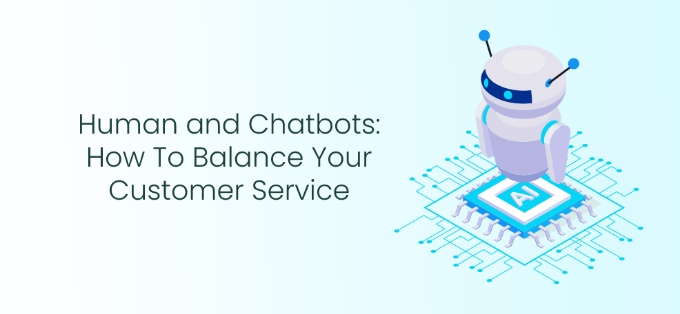
In the dynamic realm of customer service and problem-solving, the convergence of automation and human interaction has emerged as a pivotal strategy. While chatbots undeniably excel at handling routine tasks efficiently, the intricacies of complex issues necessitate the involvement of human agents. This juxtaposition of technological capabilities and human expertise creates a symbiotic relationship that fosters holistic and effective problem resolution.
Addressing Complex Issues
Modern businesses face a diverse array of challenges that often require intricate analysis, emotional intelligence, and a nuanced understanding of the customer’s perspective. It is in these situations that the partnership between chatbots and human agents becomes indispensable. Chatbots, with their rapid response times and ability to access vast databases, can offer preliminary assistance by gathering relevant information and suggesting potential solutions. However, the complexity of certain issues demands human intervention to decipher underlying nuances, consider contextual factors, and devise innovative strategies.
The key lies in orchestrating a harmonious collaboration between these two distinct entities. Chatbots can act as valuable first responders, quickly providing customers with initial information, performing routine tasks, and even guiding them through standard procedures. In parallel, human agents bring to the table their capacity for critical thinking, empathy, and adaptability. They can delve deep into the intricacies of a problem, empathize with customer emotions, and apply creative problem-solving techniques that automated systems currently struggle to replicate.
Human Touch in Automation
While automation undeniably enhances efficiency and response times, the challenge lies in preserving the human touch. Customers seek not only rapid solutions but also a sense of being understood and valued. This is where the integration of empathy and understanding becomes crucial in automated responses. By infusing automated messages with a human-like quality, organizations can bridge the gap between technological functionality and genuine human interaction.
NLP advancements have revolutionized customer service by enabling chatbots to understand and respond with empathy. Phrases like “I empathize with your frustration” or “I’m here to assist you through this situation” can greatly alleviate customer concerns. Moreover, providing options for transferring the conversation to a human agent when the complexity surpasses the chatbot’s capabilities demonstrates a commitment to customer-centricity.
Ensuring Customer Data Securit

In today’s digitally interconnected business landscape, the protection of customer data and the preservation of privacy have emerged as vital imperatives. As companies engage with customers through various online channels, the strategic alignment of technology and ethical considerations becomes paramount. To foster trust and maintain credibility, businesses must adopt comprehensive measures to address privacy concerns transparently, assuring customers that their valuable data is managed with the highest level of security.
Addressing Privacy Issues
In the milieu of digital transactions and virtual interactions, the sanctity of customer data assumes unprecedented significance. Enterprises stand at a crossroads where the fusion of technology and ethical accountability demands a meticulous approach toward data security and privacy. In this context, it is imperative for businesses to undertake a proactive stance, engaging in open dialogues that acknowledge privacy apprehensions and elucidate their measures for data protection.
Transparency serves as the cornerstone of this approach. By openly communicating data collection practices, storage methodologies, and intentions behind data usage, businesses not only conform to regulatory requirements but also underscore their dedication to conscientious data handling. Constructing comprehensive privacy policies that are easily accessible to customers not only educates them about their rights but also solidifies the foundation of trust upon which lasting relationships are built.
Safe Customer Data Handling
At the heart of customer data security lie the dynamic capabilities of chatbots. Engineered with security at the core of their functionality, these digital tools adhere to stringent security protocols to ensure the impregnability of sensitive customer data. Encryption heralded as one of the pivotal pillars of modern data security, is wielded to shield data during transmission, rendering it unintelligible to unauthorized entities. Furthermore, the establishment of secure connections via protocols such as HTTPS further erects a fortified barrier against potential vulnerabilities.
A linchpin in the realm of data security, stringent access controls are implemented to govern the interaction with customer data. Chatbots are programmed to permit access solely to individuals possessing the appropriate authorization credentials, thwarting unauthorized access attempts. Routine audits and periodic reviews validate the efficacy of these access control mechanisms, bolstering the overall resilience against potential data breaches.
In a testament to the advanced capabilities of contemporary technology, chatbots infused with artificial intelligence and machine learning algorithms possess the acumen to detect anomalies and aberrations in patterns of usage. By identifying potentially malevolent behavior in its infancy, these intelligent agents contribute significantly to the early detection and mitigation of security breaches, precluding significant damage to customer data.
Future of Chatbot Technology
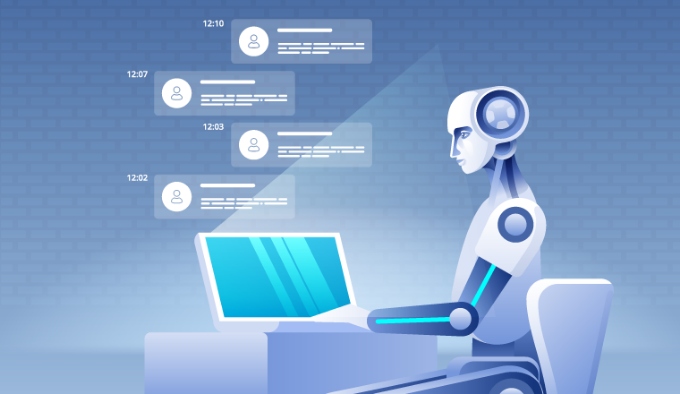
In an era marked by rapid technological advancements, the chatbot technology is on the brink of a significant transformation. With ongoing progress in artificial intelligence (AI), chatbots are set to become more intelligent, adaptable, and versatile digital entities. This impending evolution holds the promise of revolutionizing customer interactions, offering solutions of unprecedented sophistication, and exhibiting the capacity to anticipate and address customer needs with unparalleled precision.
Advances in AI Technology
As AI technology continues its ascent, chatbots are set to harness its latest breakthroughs, propelling their capabilities into uncharted territories. The infusion of natural language processing (NLP) and machine learning algorithms enables chatbots to comprehend and interpret human communication with a depth and nuance previously unattainable. This evolution transcends scripted responses, empowering chatbots to engage in meaningful conversations that mirror the intricacies of human dialogues.
The amalgamation of AI and data analytics bestows chatbots the power to glean insights from vast datasets, enabling them to deduce patterns, trends, and customer preferences. Armed with this knowledge, chatbots can offer tailored recommendations and solutions that resonate intimately with individual customers. By evolving beyond reactive interactions, chatbots become proactive problem solvers, demonstrating a level of customer-centricity that augments customer satisfaction and loyalty.
Seamless Omni-channel Experience
The future of chatbot technology envisions a seamless transition across the tapestry of communication channels, spanning social media, websites, messaging apps, and more. This integration ushers in the era of an omnichannel experience, where customers can initiate interactions on one platform and seamlessly continue them on another, all while encountering a consistent and unified customer journey.
Imagine a scenario where a customer initiates a support inquiry on a company’s website and later continues the conversation on their preferred messaging app. Future chatbots will not only retain the context of the conversation but also tailor their responses to the nuances of each channel. This cohesive experience eradicates the friction of switching platforms and underscores a commitment to customer convenience.
The strategic integration of chatbots into the realm of customer service heralds not just a mere operational shift, but a profound revolution in the way businesses engage with their clientele using chatbots for customer service. As the digital age continues to reshape customer expectations, harnessing the potential of chatbots emerges as a multifaceted strategy that not only augments operational efficiency but also redefines personalization and nurtures customer satisfaction.
To summarise, by adroitly balancing the power of automation with the irreplaceable human touch, businesses chart a transformative course using chatbots for customer service that not only elevates their customer support capabilities but also intricately weaves them into the fabric of competitive distinction within today’s cutthroat business landscape. This strategic adoption not only responds to the evolving preferences of modern consumers but also positions companies at the forefront of innovation and customer-centricity.

